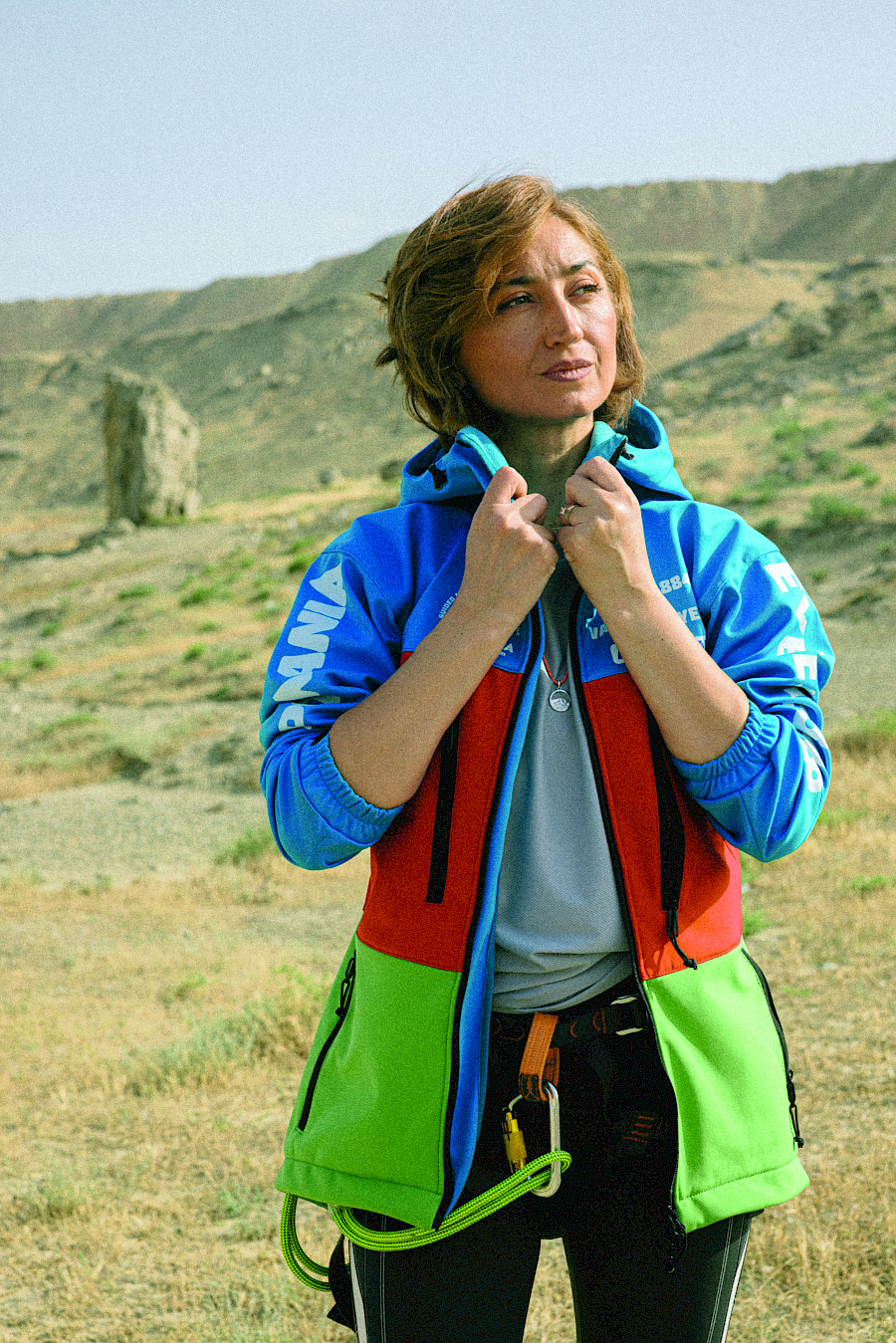
What drives a person to conquer seemingly insurmountable mountains, where every second is a fight for survival and the summit feels like the edge of the impossible? In this interview for NARGIS Magazine, we speak with Vafa Musayeva, the first female citizen of Azerbaijan to stand atop Everest and raise our nation’s flag high above the world. Her journey is not just a climb – it’s a symbol of pushing past inner limits and breaking through barriers. It’s a story of how a person can surpass themselves, carrying personal dreams and the weight of a whole country, proudly represented at the highest point on Earth.
there’s no room for compromise at 8,000 metres
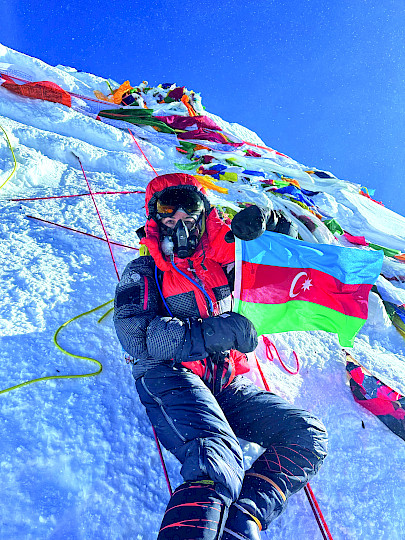 |
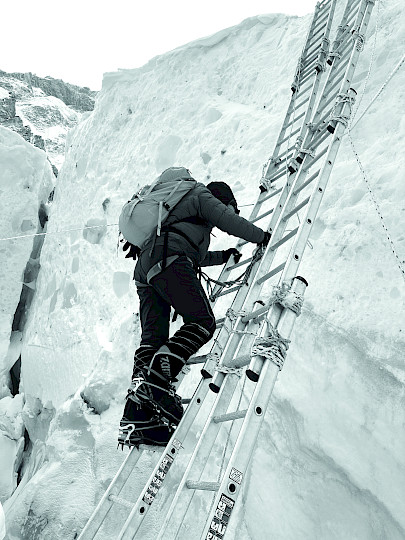 |
What inspired you to start climbing mountains?
No one leaves this world without experiencing what they once laughed at or condemned. I always believed that every profession has meaning in this world. Everything has value and serves a purpose in society. But when it came to mountains, I wondered: why would someone put in so much effort just to climb to a peak, only to come back down again? And in such a risky way. Putting your life in danger. How could someone be so reckless? That’s what I used to think. But one day, the opportunity to climb to the top of Mount Heydar came into my life, and I realised how deeply I wanted to do it. And that was where it all began.
Did you immediately know you wanted to keep climbing?
I reached the summit, and at first, I thought it was nothing special. It wasn’t hard at all. But on the way down a storm hit us and we ended up in a tough situation, exhausted and soaked. On returning to Baku, I told myself I wouldn’t do it again. But after a few days, a new feeling began to grow inside me. That feeling brought me back to the mountains again and again. After visiting all the peaks in Azerbaijan, I started going repeatedly to train and stay in shape. Each time felt completely different.
You spent eight years moving towards the Everest summit. How did you change during that time?
As I kept climbing the mountains of Azerbaijan, I became curious about higher peaks. Our highest is 4,466 meters, but I wanted to know what 5,000 meters feels like what kind of Vafa appears there? I climbed Mount Sabalan, and it gave me very different feelings. Then the idea of 5,000 obsessed me. We decided to climb Mount Elbrus, Europe’s highest peak. At 5,000 meters, I felt incredible difficulty and a new kind of emotion, something beyond what I’d experienced in the Caucasus. The pressure, the atmosphere, everything changed. It felt like going deeper, not just higher. This was a different Vafa. Later, I wondered about 6,000 meters. I went to the Pamirs and saw that 6,000 is a whole new reality, like a frozen version of hell. I used to imagine hell as hot, but this was ice and snow. At over 6,000, I met another Vafa – challenged, transformed. Then I asked myself, “Who will I be at 7,000 meters?” In January 2025, I joined an international expedition to climb Ojos del Salado. By then, I was already preparing for Everest. It might sound unusual, but those who have experienced it will agree: Everest was right in front of me and said, “Set everything aside, let’s do this and finish it.”
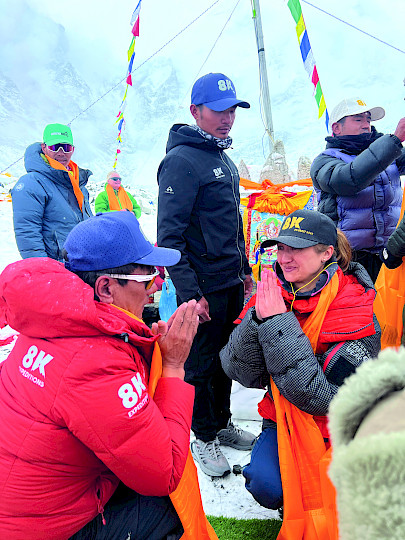 |
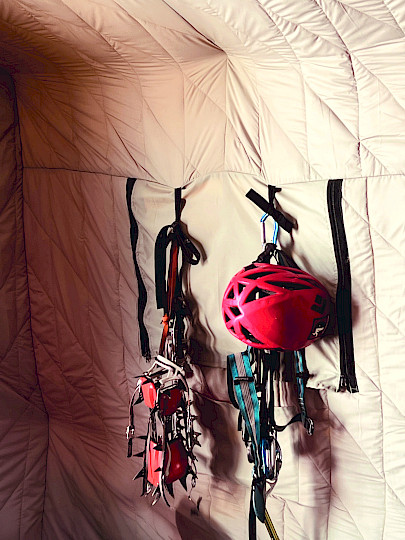 |
How did you prepare physically and mentally for the climb?
I’m generally someone who loves being active. Our bodies aren’t made to sit still all the time. They need movement, running, and so on. I made sure to keep active every day and thought of it like eating, drinking, or sleeping. It became a natural part of my life. At first, I made a plan and started training regularly, running around my house and in parks without skipping a day. Even my neighbours noticed when I carried weights of 5, 6, or even 20 kilos strapped to my body. I would climb up and down the stairs of my 16-floor building, over and over, as part of my routine. I realised that without a clear intention, things take longer and feel uncertain. Once I set Everest as my goal, everything changed. I told my family I was training specifically for Everest, and every action I took was connected to that purpose. This mentally prepared them, so when I finally announced my expedition, it wasn’t a surprise. I knew I had to train consistently to be ready.
What is more important in mountaineering – physical endurance or mental resilience?
Strong muscles and endurance are the key. It’s a road that never ends. But the main thing is mental endurance. Some climbers had much greater physical endurance than I did. One climber literally reached the summit but chose not to conquer it and turned back. As for me, I trained myself physically, endured hunger, and worked on mental strength – learning to negotiate with myself in many ways. Because up there, no one forces you to do anything. It’s just you and your willpower. Mental endurance is more important. If your mind tells you no, then there is nothing you can do about it.
What were your biggest fears before the climb?
It was more a feeling of responsibility – for example, to Birbank and to the entire country. The fear was losing the flag. What if the wind suddenly took it out of my hands? During that journey, I felt so insured, so protected – it was just a feeling. I would set my foot down knowing that someone was there to catch me, to take me, to put me down. Someone had assured me 100% that I could go without worrying about anything. I went with that feeling. I don’t know if life prepared me this way or if I prepared myself. But not for a second did I feel fear there.
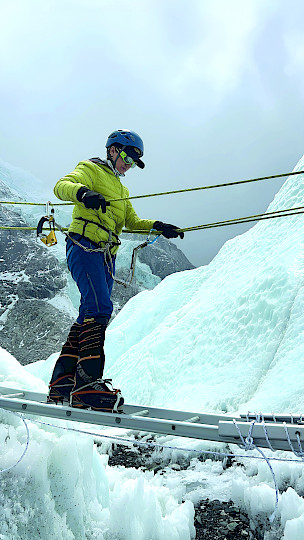 |
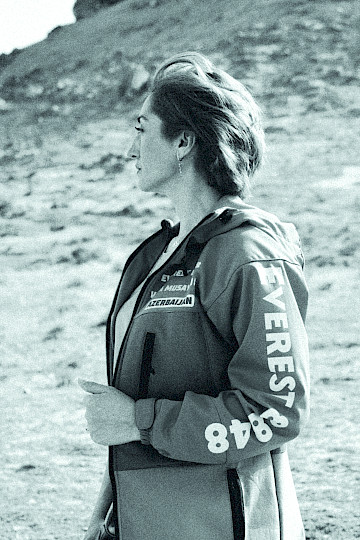 |
Did you experience any life-threatening situations during the climb?
There are the death zone and icefall. You go to sleep, but you might not wake up the next morning. That’s what the death zone is – there is no oxygen there. After descending, people eat very little, drink some water, gather their things, and immediately go down. In other words, at that point on Everest, you rest for 2-3 hours before ascending, then after coming down, you rest again before descending further. It is not meant for living or staying. Many people suffer complications there, physically and mentally. Some have brain hemorrhages, some develop fluid in their lungs, some pass away, some suffer from sleep disturbances. All of this happens in the death zone.
How long does the ascent to Everest take?
In total, the expedition takes around 35 days. As for the final push to the summit itself, I don’t remember exactly, maybe it was around 6:30 or 7:30 p.m. Nepal time when we set off. But by dawn, around 8:00 or 8:30 a.m., I was already at the top. Then we began our descent – everything happened right on time, and beautifully so.
How many times did you return to base camp before reaching the top and why?
That’s part of a process called rotation. You ascend to higher camps like Camp 1 or Camp 2, and then return to base camp. It helps your body acclimatise to the altitude and reduce oxygen levels. Some climbers do this once, others two or even three times, depending on how they feel. We did just one rotation. Then, on the next attempt, we went for the JULY 134 COVER STORY summit. Some people need more time. My friend, for instance, went up and down several times. When I asked why, he simply said, “I feel like I need it.”
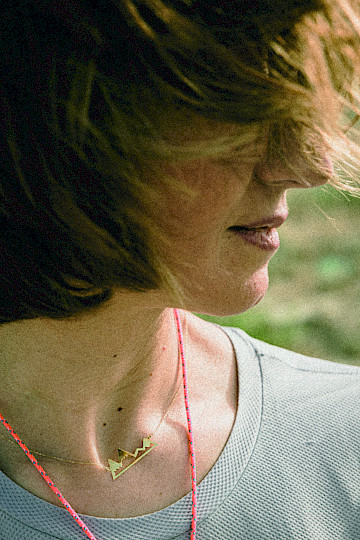 |
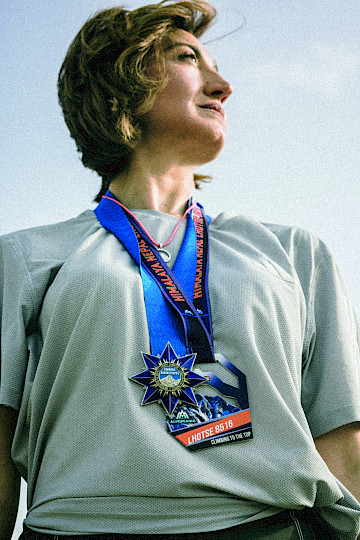 |
How did you manage the extreme cold and altitude?
Your gear must be top-tier – there’s no room for compromise at 8,000 metres. I made sure to get the best, most professional equipment available. There’s even gear made specifically for 8,000-metre peaks – it says so right on the label. A jacket rated for 7,000 metres simply won’t do. Same with boots, backpacks, and gloves. I double-checked everything. Still, the cold was brutal. You feel it when you wake up, when you lie down, when your face starts to burn. My skin was scorched, despite the oxygen mask and the goggles. Without those high-altitude goggles, you risk snow blindness: the sun reflects sharply off the snow, and it can seriously damage your cornea. I had the proper eyewear, gloves, everything, but the mountain still left its mark.
What was the most challenging part of the ascent?
For me, the most difficult section was the route from Camp 1 to Camp 2. It was extremely long and exhausting. It wasn’t technically difficult, but physically and mentally draining. Strangely enough, the technical parts of the climb felt easier to me. I enjoyed the challenge and focus they required. But that flat, monotonous stretch just didn’t inspire me. I found it gruelling. Another extremely tough part was the final push to Camp 4. That’s the area where many deaths have occurred, and you can feel it in the air – a kind of heavy silence. It was a dark place for me, emotionally and physically. The altitude was high, the oxygen was low, and my body started to suffer.
Were the moments when you considered turning back?
The fact that Everest appeared along the way, those mountains, the expeditions – none of it had ever been part of my plan. But life brought it all to me naturally. Step by step I followed the path, and when I finally reached Everest this year, I understood one thing clearly: the time had come. There were no more questions. All the answers were already there. So I went calmly and confidently. People asked if I had any doubts or second thoughts. But there was no space for doubt. Not even the slightest bit. I wasn’t sitting there wondering if I would reach the summit. I knew I had come for the summit. I was completely certain of it. And this certainty was not just about believing in myself. It came from honestly assessing the situation and seeing that everything had aligned perfectly.
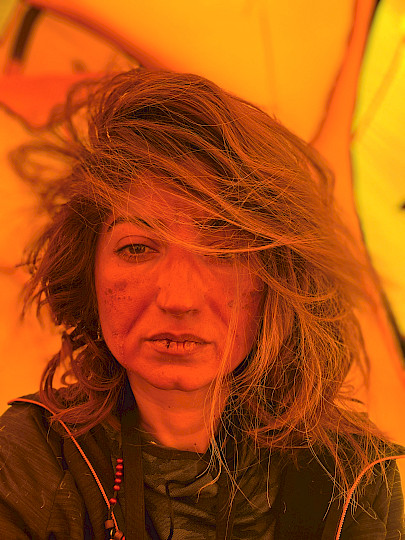
Can you describe the moment you first saw Everest?
What did you say to it? I thanked Everest for accepting me. Among climbers, there is a deep belief that mountains are sacred places. We say that if the mountain allows you, then you can be on its summit. And when I stood there, I felt that permission. I rested my head and hand on the mountain, as if we kissed and embraced. I thanked the Creator. It was a moment of connection. Looking around, I felt such beauty and strength. I thought to myself, this is true grandeur. Seeing the world from the highest point on Earth was an overwhelming experience. It was the peak of my emotions. I even filmed the moment when I planted the Azerbaijani flag. I feel so lucky to have been there.
People asked if I had any doubts or second thoughts. But there was no space for doubt. Not even the slightest bit.
How long did you spend at the summit, and what did you do there?
When I reached the summit, the wind speed was around 100 to 110 kilometres per hour. This is the very top of the mountain, the final point. There are ropes up there, and without them, you simply couldn’t stand. At the summit, you can stay for a maximum of one minute. The oxygen is limited, the temperature is extreme, and the weather can shift without warning. You also have to make space for other climbers reaching the top. Every second matters, and the longer you stay, the greater the risk. The summit is not a place to rest – it’s a place to witness briefly and leave quickly.
You have mentioned before that you talked to yourself during the climb. What were you saying to yourself along the way?
One of the hardest moments was at Camp 2. I remember thinking, “I’ve come so far…will I even make it back to base camp?” I had no energy left. Days of eating food made with snowmelt and drinking water with no minerals had taken a toll. It felt like nothing could restore my strength. Lying in my tent, I started talking to myself: “Vafa, you’ve done it. You reached the highest point on Earth. You summited Everest. Well done.” And then I reminded myself – “This isn’t easy. Many didn’t make it. Some turned back. Some lost their lives. But you did it.” That gave me strength. It might sound strange, but I truly believed it. So I told myself: “Get up. Put your boots on. Pack your things.” There was no oxygen, and every move felt impossible, but I stood up and kept going.
What is more challenging, climbing or descending Everest?
After Everest was conquered, I wanted to climb another eight-thousander – Mount Lhotse. Usually, climbers do it at different times, but I felt I had the strength to do it. They tried to dissuade me very strongly, because I had to wait it out in the death zone. They said that if something happens to you here, we won’t be able to save you. The Sherpa was instructed to lower me down at all costs. And I prayed for a sign. And then such a hurricane started that the tents were simply torn apart by the wind. There was no question of descending in such a wind. And we stayed there. Thanks to this, I was able to climb the second mountain. It was incredibly beautiful.
Who did you last call before and first after the climb?
Back when I climbed in the Pamir mountains, I kept in touch with my family constantly, but it made me emotionally vulnerable. So this time, before I left, I told them: “Please don’t write to me. Pretend I’m not here. Handle everything on your own.” I promised I would send just one thing daily – a heart emoji, whenever there was internet, just to show I was alive. Nothing more. I needed to disconnect. During the climb, I didn’t write to anyone. Even when I received messages from colleagues sending me motivational videos, I didn’t respond – just a single heart. I told them clearly: “Right now I’m not available to talk, to share, or to explain anything. I’m in a different world.” I kept telling myself: “Right now, I’m not a mother, not a wife, not a daughter – I’m just Vafa. This is my mission. I’ll return to all those roles in 35 or 40 days.” Once the internet was cut off completely, I felt even freer and focused. Everyone understood that I had reached a critical altitude. After I summited, news spread through the expedition team before I even had a chance to say anything. By the time I came back down, the congratulations were already waiting for me.
What advice would you give to aspiring climbers?
As a coach I never give advice. Not even to my own child. A coach doesn’t tell you where to go or what to do. A coach meets you exactly where you are and simply holds up a light so that you can see your own path. Maybe I see three roads and you might see thirty. Even if we’re climbing the same mountain no two routes are ever the same. I can offer technical tips to make sure your equipment is safe and meets the standard. But the inner journey belongs only to you. So I would only say: “Keep your eyes open, keep your soul open, sync with the mountain, and listen to what it has to tell you.” This is not advice. It’s an invitation.
They say mountains transform people. What has summiting Everest taught you about yourself?
The mountain has been my greatest teacher. It does not speak or give advice. It simply stands in silence and calls me back. Each time I climb and return, I come back changed. Transformation happens through the presence of the mountain. Others may find their guides in people or books. I found mine in the mountains. The higher I climb, the deeper I go within. If you reach Everest and nothing inside has shifted, then what was it for? The mountain expanded my values. It taught me not to judge, not to make conclusions too soon – about people or about the path. You take one step, and the road reveals itself. The mountain taught me patience and presence. Just begin the journey. The mountain will guide you.
Would you plan to climb Everest again? What is your next goal?
For me, this was a life mission. Other mountains are just mountains, but this one was different. Now that I’ve completed it, I feel a deep sense of peace and calm. My body is resting, and I’m simply enjoying that state. Whether I’ll return to the same mountain or which peak will be next – no one knows. It will happen when the mountains call me again.
Why do you climb this high?
For me, the mountains are about learning to be everything for yourself. A friend, a guide, a healer. They teach you how to talk to yourself, how to listen, how to truly be with your soul. I once shared a post saying, maybe I love the mountains because I love myself more when I’m there. Why? Because up there, I have no one else. Not my child, not my partner, not my mother or father. No one. Just me. In the mountains, you are completely alone with yourself. And that is a beautiful experience. The inner dialogue, the way I treat myself up there – it’s something special. That’s when I realised that I trust myself. I believe in myself. I care for myself. I cheer for myself. I am capable of carrying myself through anything. And that, I think, is a magnificent thing.
The inner journey belongs only to you
A year before the climb, after years of training others and working in education, I realised I had to pause everything and focus fully on the ascent.
I’m a mother of a four-year-old, and even while climbing to great heights, I sometimes receive messages saying my child isn’t eating well or misses me.
I was so obsessed with Everest that I watched every documentary and interview with mountaineers – I knew everything about it. So you can imagine my surprise when, during the expedition, I recognised the voice of a famous climber. It was Ant Middleton!
Keep your eyes open, keep your soul open, sync with the mountain, and listen to what it has to tell you
